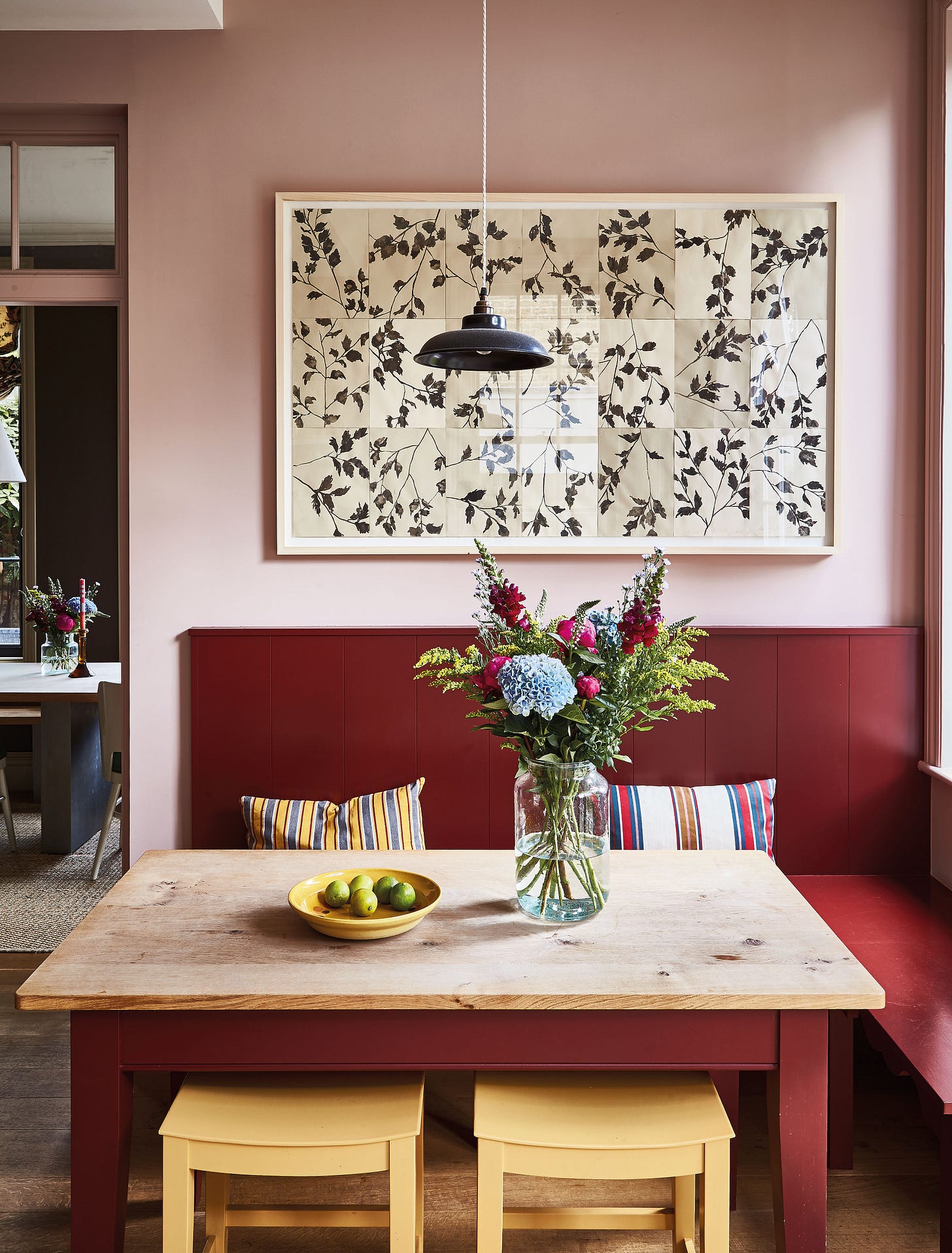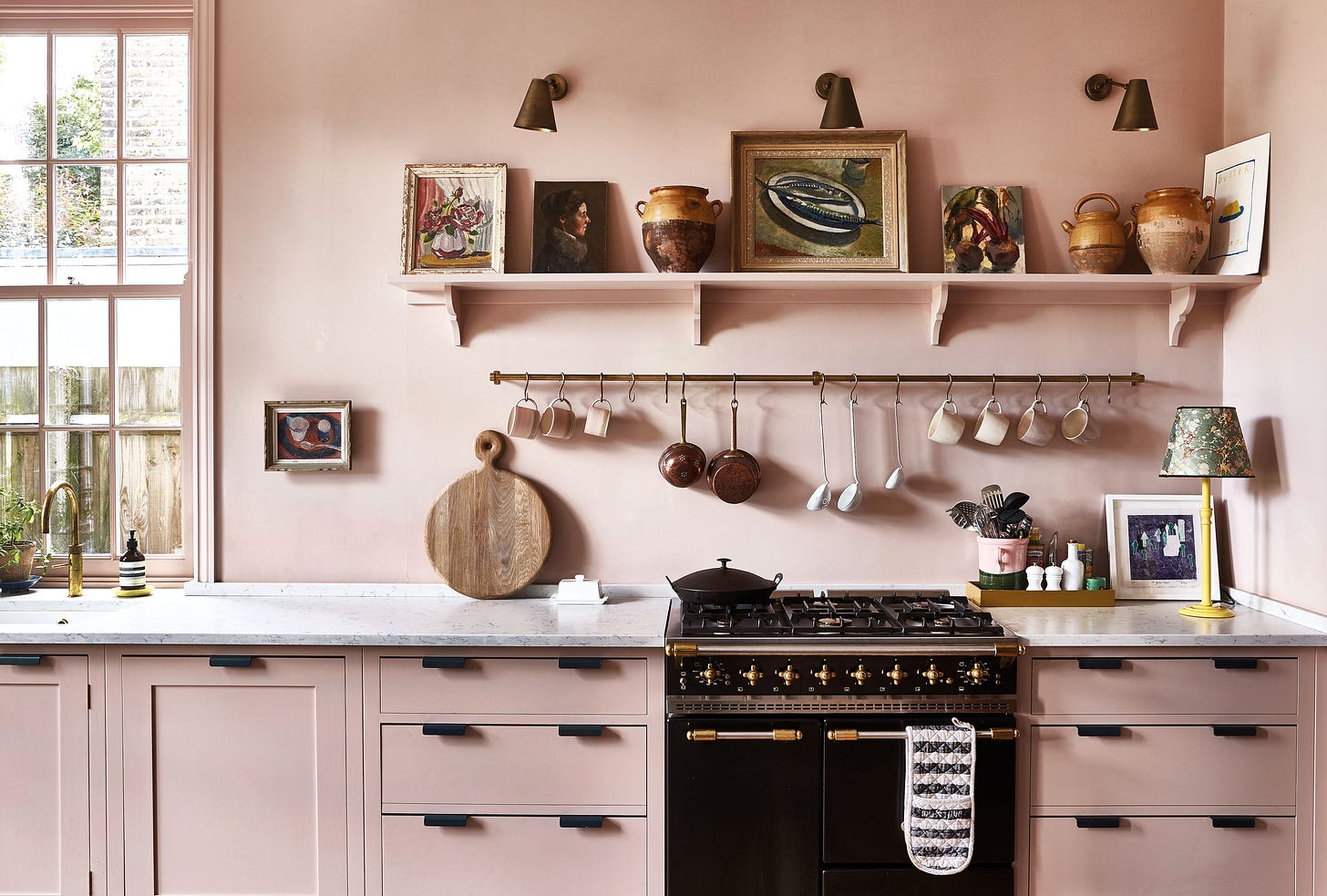How to collect and curate art for your home
An accessible guide on finding your style, where to buy and how to hang art. Plus, for paid subscribers, an interview with the author.
There are so many interiors books out there ( I should know – I’ve written five of them myself) and while they are often very beautiful with thick, glossy pages and fabulous photographs, many are destined to remain (as their alternative handle would suggest) on the coffee table. They are, my friend and podcasting co-host Sophie Robinson declares, “flickers not readers”.
But, every now and then, out of this pile rises, phoenix-like from said coffee table, a book that really has something to say. Now don’t get me wrong - I love a beautiful book as much as the next person, but I also like to learn stuff. I want to come away knowing more than I did when I opened the cover.
And for this month’s book review I have one that answers so many of the questions on the subject I have been asked most often over the last 11 years of the blog – and that is about art. Where to buy it? How much to spend? How to hang it? (The short answer to that one is: usually lower than you first thought.)
In her first book journalist Rachel Loos, a former editor of ELLE Decoration and lifestyle editor of Grazia, has brought all these together to address those daunted feelings that so many of us have when it comes to dressing our walls.
Art At Home, an accessible guide to collecting and curating, covers everything from the difference between prints, limited edition prints, vintage works and fine-art photographs to how to start a collection and that oft-debated question of how to hang a gallery wall.
She also addresses the issue of budget, which I think is the part so many of us really find intimidating. It may be a cliché, but beauty is in the eye of the beholder and if you love an oil painting picked up from a car boot sale, or choose to frame a set of postcards from a museum shop for a fraction of the cost of a limited edition print then that is the joy of building your own art collection – which sounds more pretentious than it is.
In my house we have a mix of prints and posters, framed photographs and magazine covers, drawings done by the kids and a silk scarf. Rachel has a chapter on displaying objects you might not think of as art as they are more 3D. Things like sculpture and clothing, mirrors and handbags.
The book is filled with interviews with experts and art lovers who open their homes for our own inspiration. I particularly loved the section that explained art jargon (salon-style hang, edition, mixed media, motif, etc) as well as the interviews on how to choose photographs, buy vintage or manage a budget.
It’s a great book for anyone who wants to start or build a collection and is feeling a little overwhelmed. Never is the feeling of being judged more palpable than when it comes to what we put on our walls.
Below are five tips from the book on how to hang your art, while below that (for paid subscribers) is an interview with Rachel: her top tips for starting your own collection, why the world of art is so intimidating – and what she would buy if money and household insurance were no object.
HOW TO HANG YOUR ART?
Every wall of your home is a blank canvas that can be filled with paintings, prints and photography. But start by considering the space as a whole. Is there a small forgotten corner that could be more interesting with a small picture in it, a larger space for a gallery wall or a big blank wall for a statement piece?
First, identify the focal point – a fireplace or large piece of furniture. This is the place your eye is naturally taken to as you enter the room. In an open-plan space there may be several, so break up the zones – sitting, sleeping, eating, dining, etc and identify the main focal point for each.
Once you have noted the key spots, think about whether you could hang something else opposite, or on a narrow bit of wall, or between two windows.
WHAT IS THE CORRECT HEIGHT TO HANG ART?
In most cases the middle of the piece should be at eye level. This is true even if you have high ceilings as you don’t want to be looking up at a painting.
A large single piece should be hung dead centre.
A group can be staggered to one side.
A gallery wall can have pieces above and below the eye-line
For artwork above furniture, aim for 30cm from the top. If it’s a sofa you will need to sit and check you aren’t going to bang your head on your picture – in which case you can go a little higher. Less than 10cm will feel cramped. If you feel like you don’t have enough height, then prop the piece on top of the furniture, leaning against the wall.
Take into account door and window frames, too. You don’t want everything to be in a straight line around the room, so try and vary the heights to take your eye round the space.
SIGHT LINES
These are the views of one room from another – and using art can bring separate spaces together cohesively. For example, if you have a yellow room looking out to a green hallway, it could appear discordant, but you can use art to link the spaces.
Or you can use two pictures that can be seen from both places that are in a similar style.
Alternatively, if one room has a gallery wall, try and counter that with a couple of larger pieces so the impression is not too busy.
SCALE
If your art is too small for the space it can feel lost. If you don’t have a group then put a small piece in a corner or even behind a door where it can provide a lovely surprise. Otherwise hang it close to a console table or a chair so the furniture sets up the artwork.
STYLE
If your walls are painted or papered in a strong colour and the artworks are in a variety of styles and colours then stick to a very simple frame.
Below is some additional content for paid subscribers. While the bulk of this first month of content is free, I wanted to thank the many of you who have taken out a subscription already so I have incorporated a couple of bonus extras. Here you have an interview with Rachel on what she would buy if money (and household insurance) was no object, how to get over the fear of being judged and how to start your own art collection.







